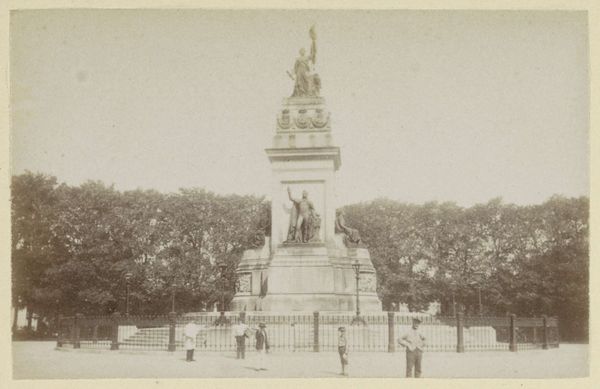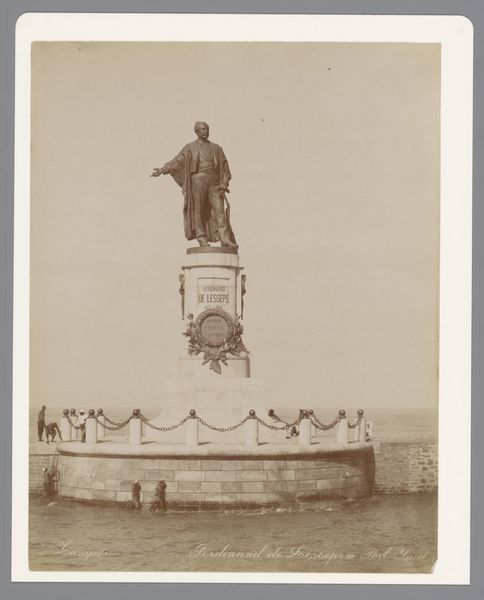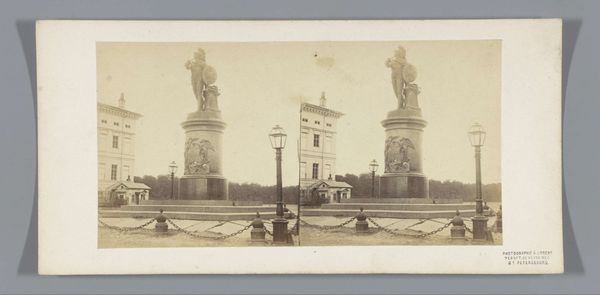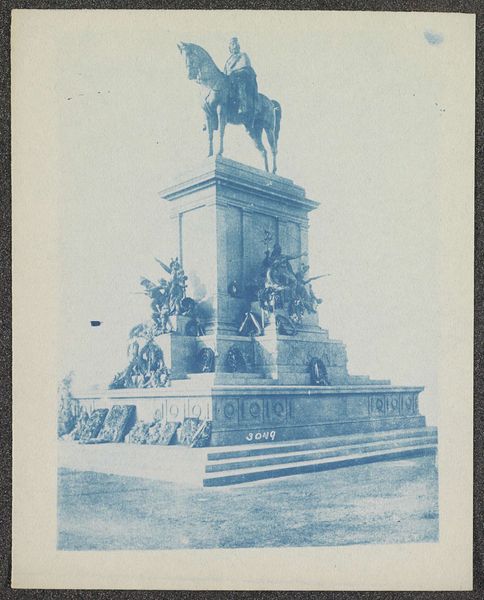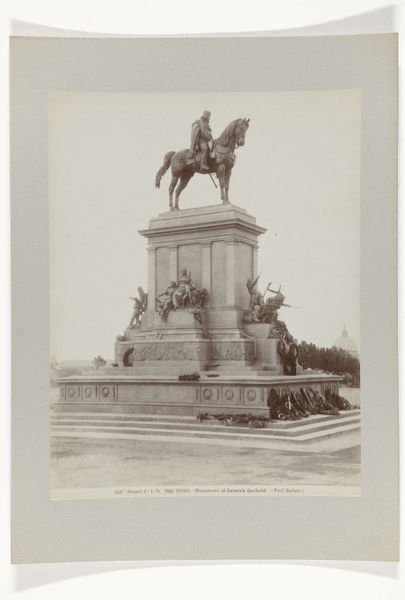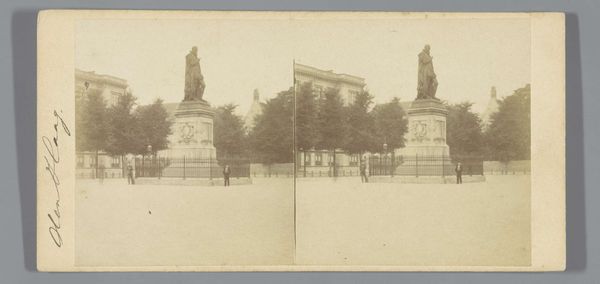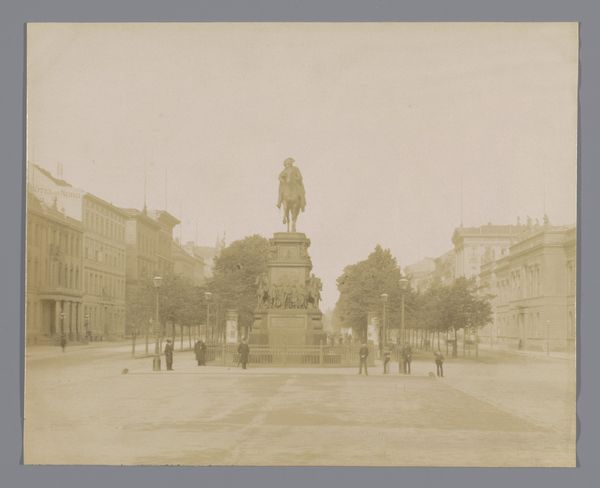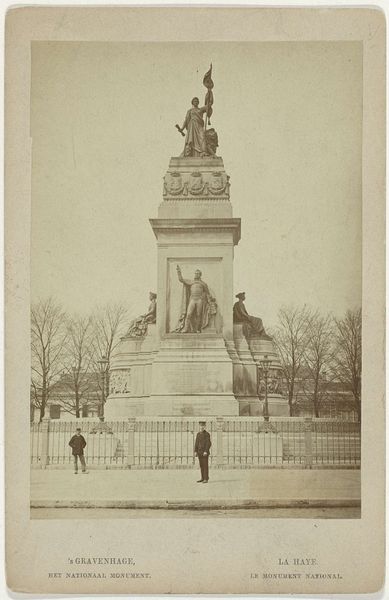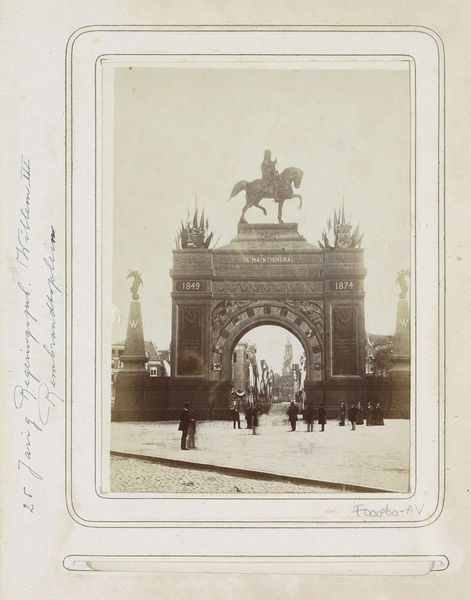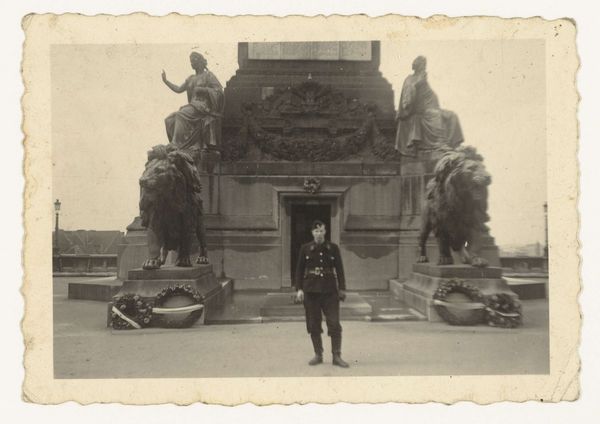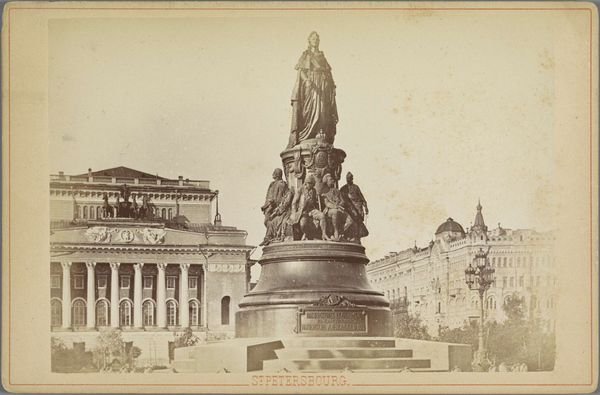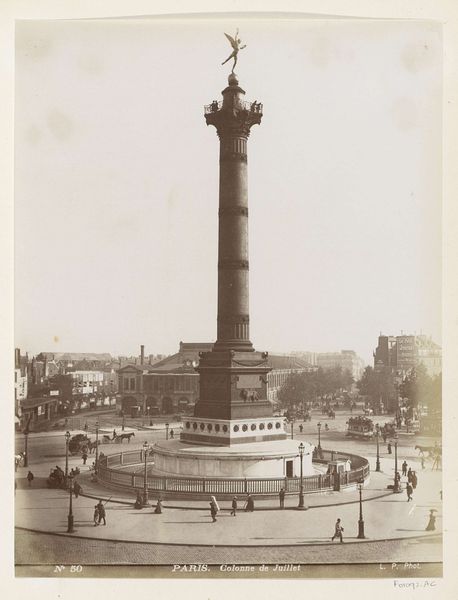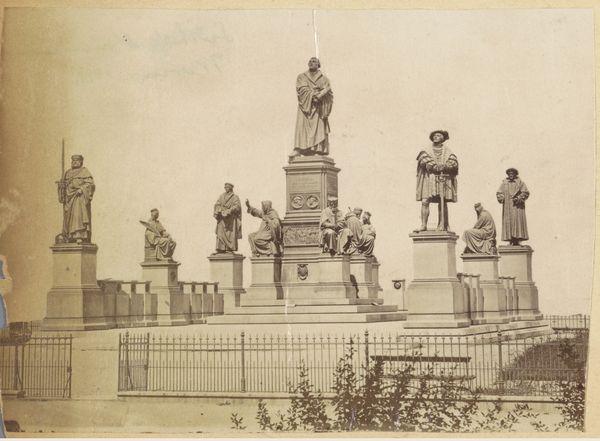
Standbeeld van Keizer Wilhelm I op het Deutsches Eck in Koblenz 1900 - 1906
0:00
0:00
Dimensions: height 77 mm, width 105 mm
Copyright: Rijks Museum: Open Domain
Editor: Here we have a gelatin silver print of the "Statue of Kaiser Wilhelm I at the Deutsches Eck in Koblenz," dating from 1900-1906. The statue looms impressively over what appears to be a town square. What stands out to me is the monumentality, almost overpowering in its statement. What do you see in this piece? Curator: I see an assertion of power meticulously crafted through symbols. The equestrian statue itself is an ancient trope, evoking images of Roman emperors and conquering heroes. Note how the gaze is directed, commanding not only the immediate space but the imagined future as well. Wilhelm is deliberately placed at a "German Corner," marking the confluence of rivers and, symbolically, German identity. Editor: It seems like the city is an extension of his rule. The architecture in the background and even the monument are almost props for the symbolic significance you pointed out. What’s your interpretation of the choice of Neoclassicism as the aesthetic style? Curator: Neoclassicism provides a veneer of historical legitimacy and rational order. By aligning the monument with the visual language of ancient empires, it subtly asserts continuity between Wilhelm’s rule and the perceived glories of the past. It uses the power of imagery to promote a vision of Germany as a unified, strong nation, reminiscent of classical ideals. The gelatin silver print only augments this sense of clarity through a seemingly realistic recording. Editor: It's interesting how much the image is staging the creation and preservation of a specific cultural memory. Curator: Indeed. Visual culture actively shapes our understanding of history and identity. What lingering impressions does this leave you with, now? Editor: The photograph feels like more than just documentation; it embodies an act of enshrining historical and cultural narratives for its audience.
Comments
No comments
Be the first to comment and join the conversation on the ultimate creative platform.
